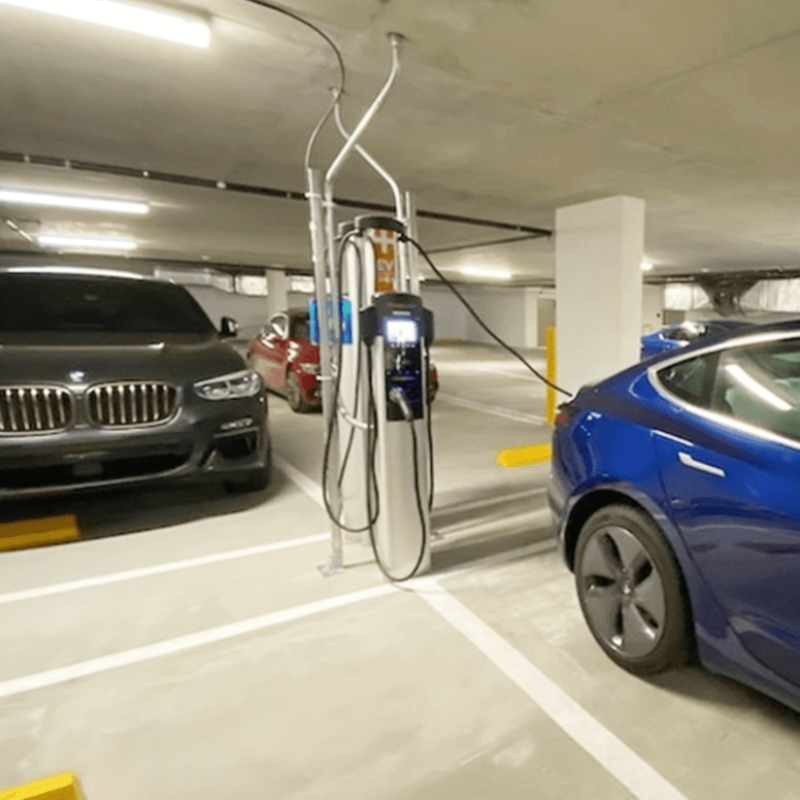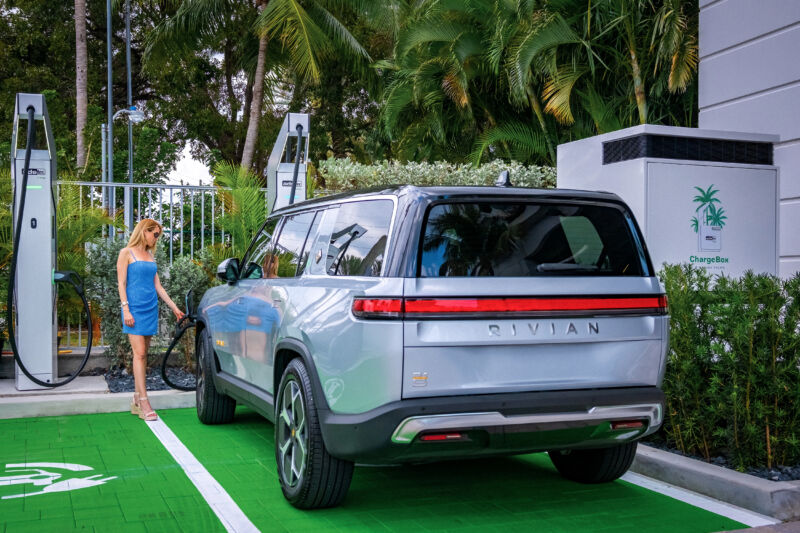EV fast-charging comes to condos and apartments


A battery-buffered DC charger is an alternative to a bank of shared AC chargers.

This is already fairly common in Europe, where higher density housing is more common. (In large parts of America, ONLY single-family housing is legal.)
Progress is slow... but it's coming...


The Marina Palms condo development in Miami recently added an ADS-TEC ChargeBox DC fast charger for its residents
Right now, the electric vehicle ownership experience is optimized for the owner who lives in a single-family home. A level 2 home AC charger costs a few hundred dollars, and with a garage or carport, an EV that gets plugged in each night is an EV that starts each day with a 100 percent charged battery pack. Plenty of Ars readers have told us that a 120 V outlet even works for their needs, although perhaps better for Chevy Bolt-sized batteries rather than a Hummer EV.
However, about a third of Americans live in large multifamily developments, often in cities that stand to benefit the most from a switch to electrification. And electrifying the parking lots of existing developments is often easier said than done. Some developments will allow individuals to install their own dedicated charger, and newly built developments may even have planned ahead and put conduits in place already.
For many others, the parking spaces will be owned by the condo association or co-op, complicating the idea of giving each EV driver their own plug. Here, shared solutions make more sense, perhaps starting with one or two shared level 2 chargers as a pilot—often this won't even require extra work to the electrical panel. Costs are a little higher than for a home level 2 charger—between $7,500-$15,000 per charger, perhaps.
But for larger developments, scaling up level 2 chargers can quickly become prohibitively expensive. Older buildings may well need their electrical infrastructure to be upgraded, and running copper wiring across parking lots starts to add up fast.
Faced with the install costs for a dozen 2 chargers, a battery-buffered DC fast charger starts to look like an attractive alternative. These use an existing electrical feed to trickle-charge a lithium-ion battery pack that can then DC fast-charge an EV, rather than requiring hundreds of kilowatts. Instead of taking 6-10 hours to recharge with AC power, about 30 minutes is usually sufficient to return most EVs to 80 percent state of charge with a DC fast charger.
A condo building in Miami, the Marina Palms, recently made just this decision after a boom in the number of residents with EVs created a need for more charging capacity than its six existing level 2 chargers could offer. It went with a ChargeBox from ADS-TEC Energy, which is capable of charging at up to 320 kW.
"That was one of the biggest appeals, that we didn't have to work with the electrical infrastructure of our development or grow it or whatever, just to get this charger installed. I think we have 200 kW in the power grid on that side, and we're using 100 kW. The other way [with multiple level 2 chargers] we would be using a minimum of 140 kW, if not the whole thing, and then we have no buffer for something else we might be doing like—for instance a car lift or that type of thing," explained George Barriere, general manager for the Marina Palms.
If the costs are comparable, there's another benefit to picking a DC fast charger in place of a bank of AC plugs—it takes up less room. "We didn't use anything from our inventory of parking, which is the biggest problem for condos—lack of parking. So, we would have to have 20 parking spaces for 20 level 2 chargers in order to service the same number of vehicles that we're doing with two parking spaces [with a single level 3 charger]," Barriere told me.
"Our deployment at the Marina Palms Yacht Club and Residences serves as a model for other large condominium and apartment complexes in Miami and elsewhere in the US," said Thomas Seidel, CEO of ADS-TEC. "The lack of charging infrastructure is still a deterrent in driver adoption of EVs. ADS-TEC Energy is solving this problem with our solution. We look forward to rolling out additional installations across the US this year. The advantages we provide will be a huge step for the US in building a strong and reliable charging infrastructure."





The other day someone was very worried that was no solution for apartment dwellers...
I looked up the average cost for living at the Marina Palms. People who live there have more than enough money to offset the price of EV's and the monthly charging and infrastructure costs. I was also concerned earlier about the availability of infrastructure for charging in rural/isolated areas for poor and middle income areas of the country such as where I live. As I said then, in some areas EV's are just not practical in today's time. Maybe in the future, but not now.
Condos there are $1.3M - $2.8M, Annual condo fees around $30,000 and property tax around $20,500. Slip fees extra.
How sweet it is.
Is the grid ready for EV's?
Connecting Solar to the Grid is Harder Than You Think (youtube.com)